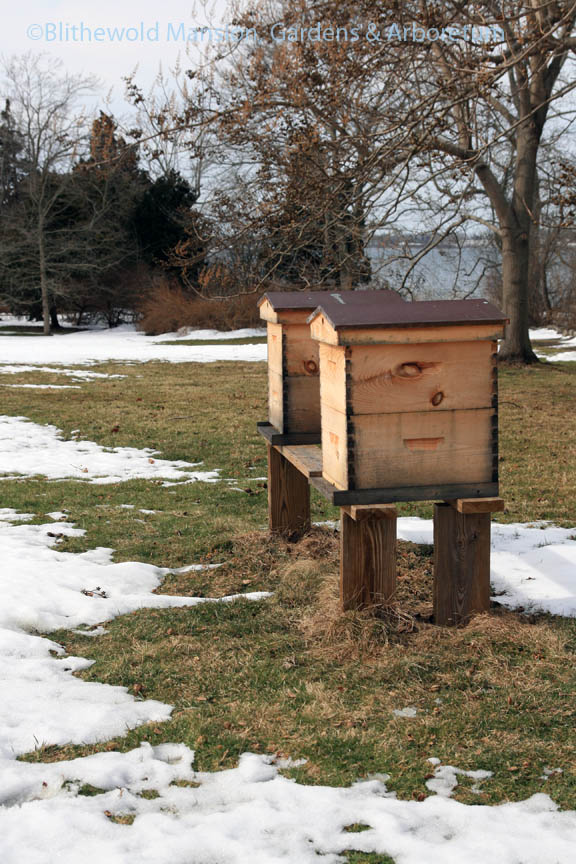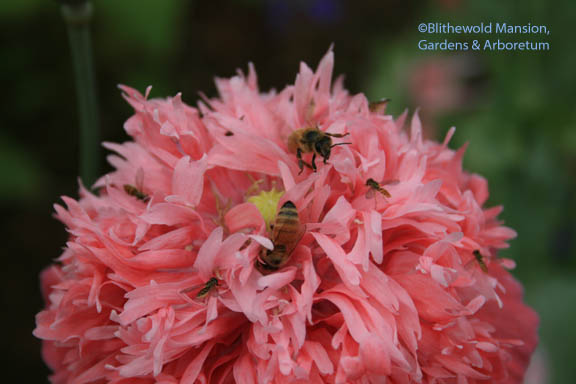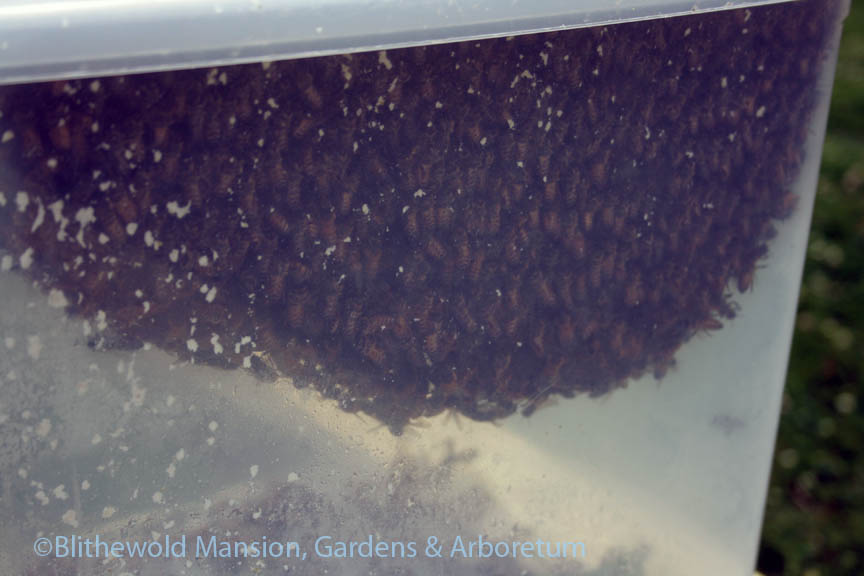Bee School (part 1)
The first thing I learned in bee school is that more people are interested in keeping bees than I would have thought. In the 2 classes held at RIC there are over 100 people enrolled. The second thing I learned was that beekeepers are as generous and enthusiastic as gardeners. They want anyone and everyone who is interested in keeping bees to succeed. To that end, the RI Beekeepers Association runs several bee school classes every year, holds monthly meetings, and encourages every newbie (newbee?) to ask lots of questions and shadow a mentor. And it’s a big enough network that we students have been reassured that there would always be a more experienced beekeeper nearby willing to come over to help inspect a hive and answer questions. With such a safety net, it would be very hard to fail.
Which is a good thing because there’s a lot to it. A lot of bees for one thing – 50,000+ workers and drones (depending on the time of year), plus one queen, make up a healthy colony. The queen can lay over 1000 eggs per day that grow into new workers (and drones) to replace old — individuals (besides the queen) only live about 40 days altogether.
The colony’s goal is to reproduce and survive the winter and it’s a fascinating community effort. The workers have specific roles that change over the course of their lifespan, going from nurse bee to house bee to guard. After about 3 weeks in the hive, they go out as the foragers we gardeners know and love. Interestingly, the workers, not the queen, make all the decisions about what the foragers should bring back to the hive (nectar, pollen, water), whether the queen is getting old and needs replacing, and when it’s time for the colony itself to reproduce (swarm). Drones only job is to fly around in great comet-shaped congregations and mate with the queen. They mooch food from the workers and are kicked out of the hive before winter.
And there’s a lot involved in keeping a colony healthy. So much that it has made my head spin and I haven’t even learned yet about all of the problems, diseases, and infestations to which they’re so susceptible…
 In last week’s class I learned that there are no ordinances against keeping bees in Rhode Island. But keepers in the urbs and suburbs should be discreet (hide hives in the back yard and paint them to blend in) and be super sensitive to neighbors’ worries. (Giving away honey is said to help assuage fears.) Apiaries should face south or southeast for winter sun, and be out of the way of heavy human, animal, and car traffic. And we’ve got to get it right. Once the bees are in residence, the hive can only be moved less than 3′. Or more than 3 miles. And bees will need a nearby water source to keep them out of your neighbor’s pool.
In last week’s class I learned that there are no ordinances against keeping bees in Rhode Island. But keepers in the urbs and suburbs should be discreet (hide hives in the back yard and paint them to blend in) and be super sensitive to neighbors’ worries. (Giving away honey is said to help assuage fears.) Apiaries should face south or southeast for winter sun, and be out of the way of heavy human, animal, and car traffic. And we’ve got to get it right. Once the bees are in residence, the hive can only be moved less than 3′. Or more than 3 miles. And bees will need a nearby water source to keep them out of your neighbor’s pool.
Blithewold’s bees are situated beautifully, facing south in full winter sun. It was warm enough today that I thought I might see some activity (in the winter, bees leave the hive on sunny days for “bathroom breaks”) but I pressed my ear up to the hive body and thought I could hear them hum. I can’t wait to learn more and maybe shadow our volunteer beekeeper and have a peak inside…


